Most people think it’s easy to use a chainsaw to cut up a tree. They may even own a chainsaw and use it to cut around their home or cut firewood. Yet, to be safe when using a chainsaw, one should be fully aware of how to properly use the chainsaw to prevent serious injuries and/or death. I see people all the time cutting around their homes using a chain saw while only wearing shorts, and won-tonly cutting here and there. The truth is there are certain characteristics of a chainsaw operation, and chainsaw use that the saw operator, known as a sawyer, should be aware of in order to operate the saw in a safe manner.
To that end, the landowners (generally state or federal agencies) of the land the Appalachian Trail passes though, require that Appalachian Trail Maintainers whom operate chainsaws be certified to US Forest Service Chainsaw operator safety guidelines.
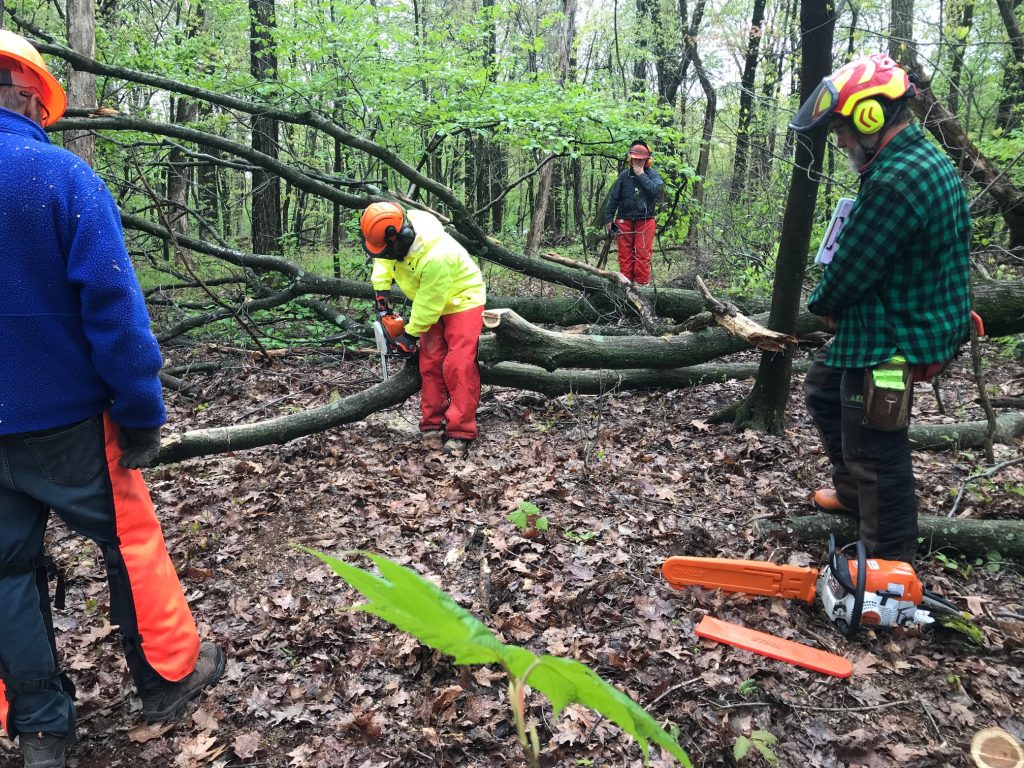
Among other things, one must wear the proper Personal Protective Equipment, including rated chainsaw chaps to protect legs, a hardhat, safety glasses (a screen alone on the hat that does not meet eye safety rules), gloves, and boots. In addition one must attend an initial two day chainsaw operators certification class. Every three years thereafter the operator must attend a one day recertification class.
Some may think, “Hey, I use a chainsaw, I don’t need that class.” Yet, in working using a chainsaw on the Appalachian Trail, one is in difficult places to reach and it could be hours before a rescue crew can reach you. Everyone will learn something at the classes to help their own safe operation of a chainsaw both in their personal use, and more importantly at remote worksite locations along the Appalachian Trail.
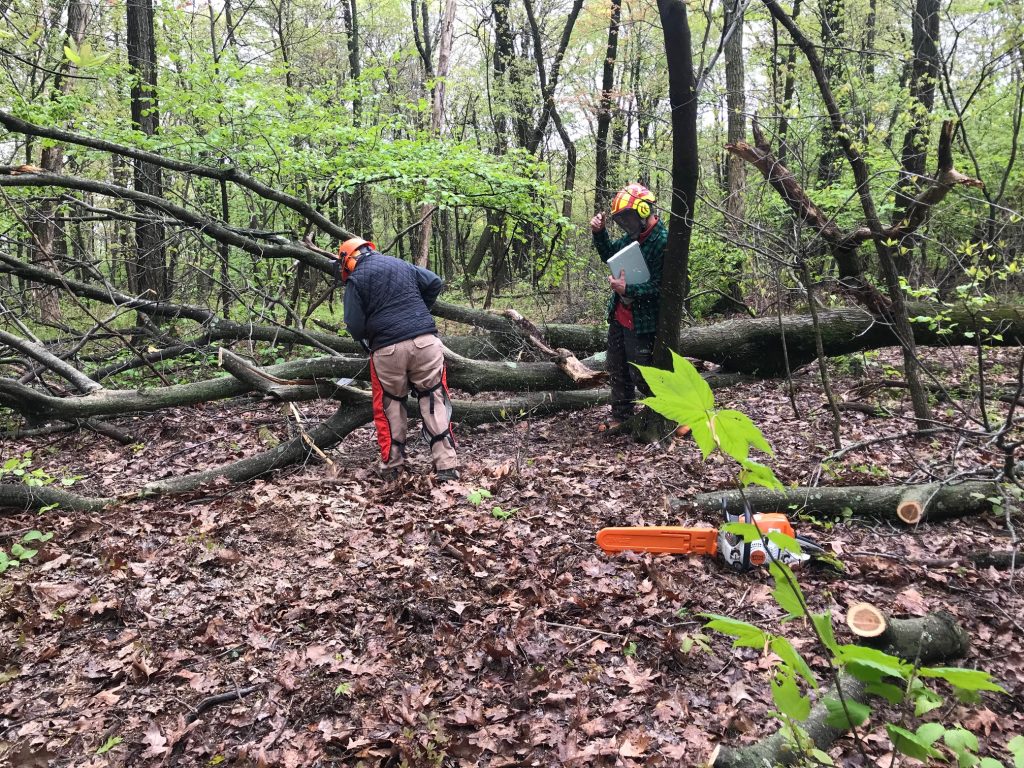
I attended my third chainsaw certification class yesterday. It was held at the 501 Shelter located near Hamburg, PA along PA Route 501. It was attended by 7 sawyers renewing their chainsaw certification. The class was managed by Bob Sickley of the Appalachian Trail Conservancy, and taught by Peter Jensen, a US Forest Service Certified Sawyer Trainer and operator of a professional trail building company Peter S. Jensen & Associates, LLC.
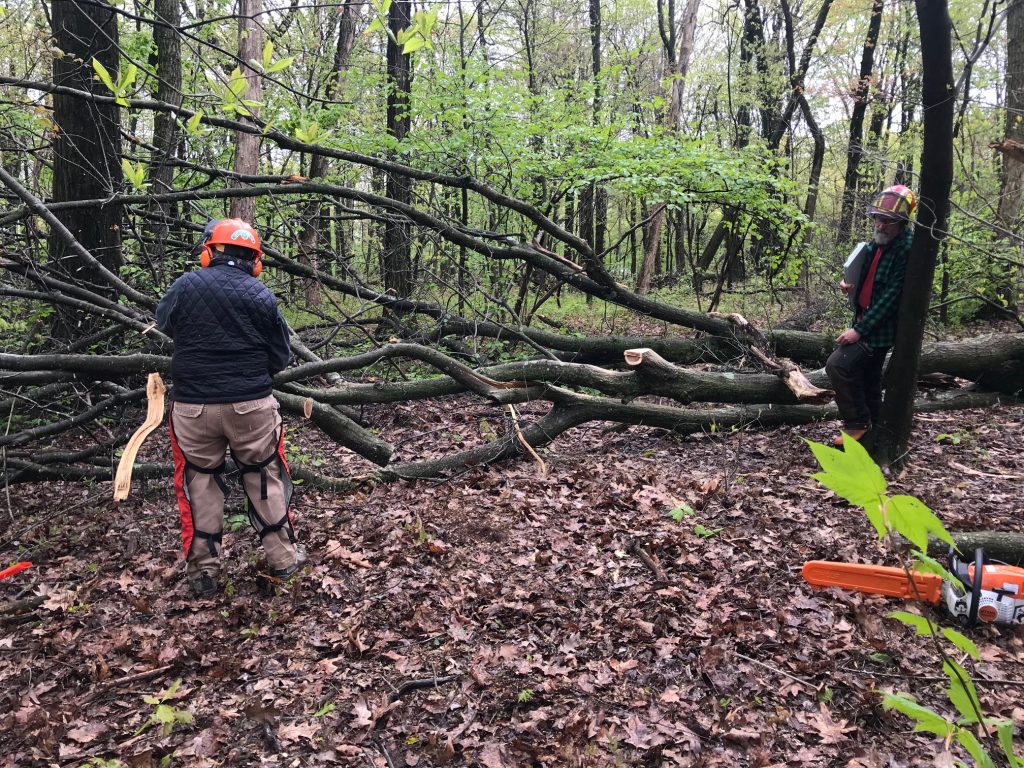
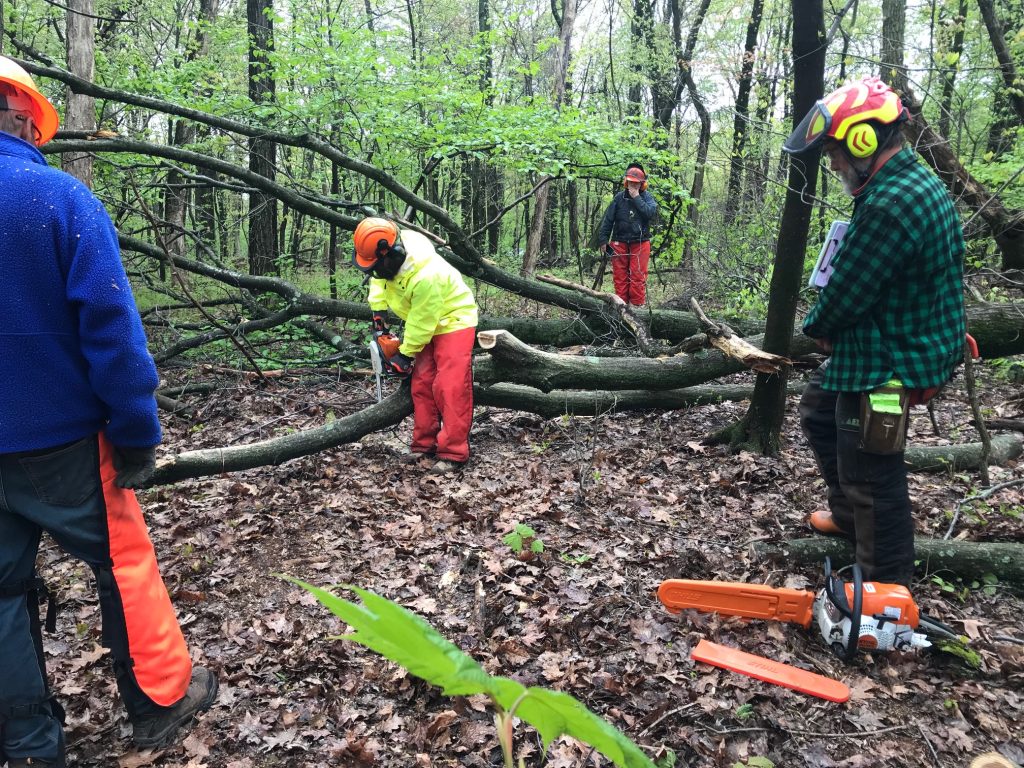
The class starts with 3 hours of professional saw operation instruction, and follows with 5 hours of hands on sawyer training where one of the crew cuts, and a second person is their helper, known as a swamper. The rest of the students observe the work, and after each cut critique the work.
It’s a very worthwhile program, especially considering the varying levels of experience that Appalachian Trail Volunteers bring with them to the trail maintenance efforts.
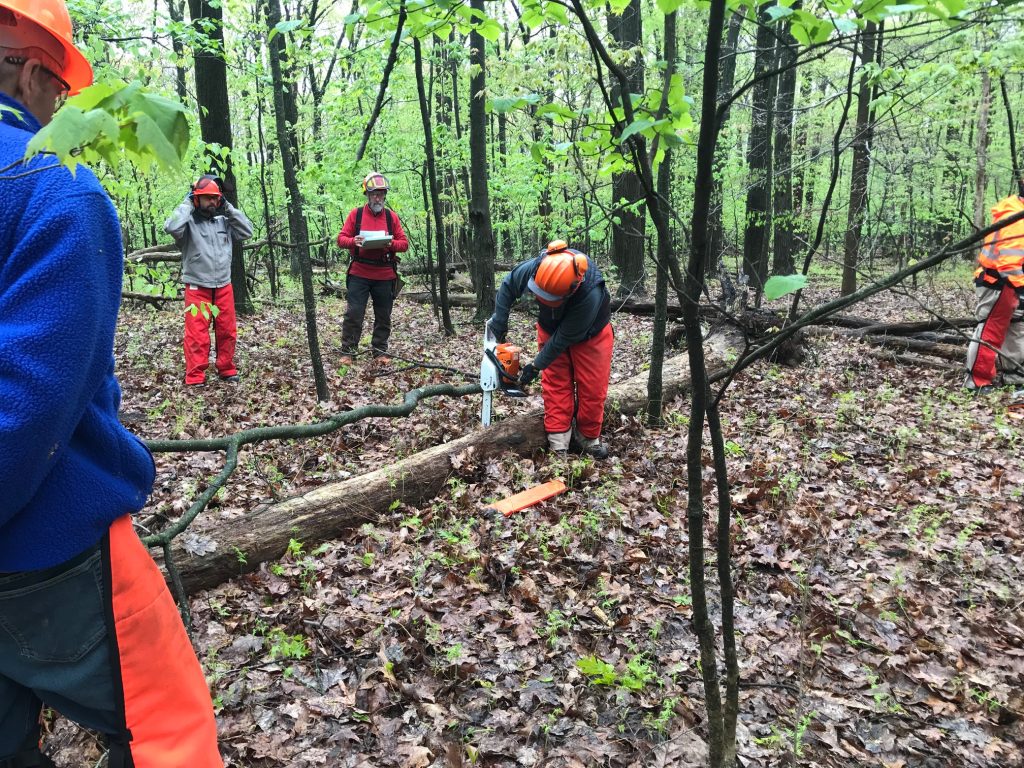
This AT Sawyer training class was run by Appalachian Trail Conservancy. Information on being an AT Certified Sawyer is available on their website. The trainer at this AT Sawyer re-cerification class was Peter Jensen, who has decades of experience with chainsaws, the Appalachian Trail and is also a professional trail builder that operates a company called Trail Builders
Information on volunteering on the AT in general can be found below: